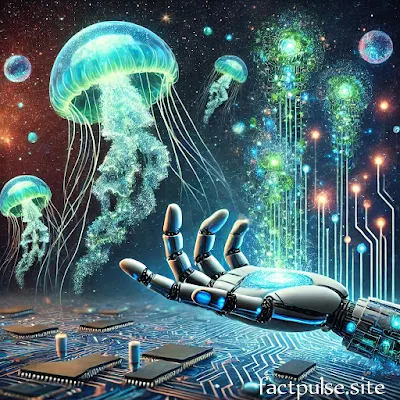Incredible Scientific Facts You Never Knew: From Nature to Technology
Science is full of wonders that shape our understanding of the world. From the breathtaking marvels of nature to groundbreaking technological innovations, scientific discoveries reveal how extraordinary our universe truly is. This article will explore some incredible scientific facts you may never have heard of, divided into two categories: nature and technology. Let’s dive in!
Fascinating Facts About Nature
1. Plants Can Communicate with Each Other
Did you know that plants have their own secret communication system? Through their roots, plants release chemical signals that help them warn neighboring plants about potential dangers, such as insect attacks. Some plants even use underground fungal networks, often called the "Wood Wide Web," to exchange information.
2. Octopuses Have Three Hearts
Octopuses are fascinating creatures of the ocean. They have not one, not two, but three hearts! Two pump blood to the gills, while the third pumps it to the rest of the body. When they swim, the third heart stops beating, which is why they prefer crawling over swimming—it’s less exhausting.
3. Trees Can Live for Thousands of Years
The oldest tree in the world, a bristlecone pine named "Methuselah," is over 4,800 years old. Found in California, it has survived harsh climates and stood the test of time. Trees like Methuselah remind us of nature’s resilience and beauty.
4. Animals That Glow in the Dark
Bioluminescence, the ability of living organisms to produce light, is a common phenomenon in the ocean. Fireflies, jellyfish, and certain species of fish use bioluminescence to attract mates, confuse predators, or lure prey. It’s nature’s way of turning on the lights in dark environments.
5. Honey Never Spoils
Archaeologists have discovered pots of honey in ancient Egyptian tombs that are over 3,000 years old—and they’re still edible! Honey's long shelf life is due to its low moisture content and natural acidity, which make it inhospitable for bacteria.
Mind-Blowing Facts About Technology
6. The First Computer Was Built in 1943
The first electronic computer, called ENIAC (Electronic Numerical Integrator and Computer), was developed during World War II. It weighed over 27 tons and took up an entire room. Today, the smartphone in your pocket is millions of times more powerful than ENIAC.
7. Wi-Fi Was Inspired by Black Holes
Did you know that the invention of Wi-Fi was inspired by astrophysics? Australian scientist Dr. John O’Sullivan and his team were working on detecting radio signals from black holes when they developed the technology that eventually became Wi-Fi.
8. 3D Printing Can Create Human Organs
3D printing has revolutionized manufacturing, but its potential in healthcare is extraordinary. Scientists are now using bioprinters to create human tissues and organs. In the future, this technology could solve organ donation shortages by printing organs on demand.
9. Artificial Intelligence is Learning Emotions
Artificial Intelligence (AI) isn’t just about crunching numbers or beating humans at chess. AI systems are being trained to recognize and respond to human emotions. This technology is being used in mental health apps, customer service bots, and even robot companions.
10. Renewable Energy Can Power the World
The rise of renewable energy technologies like solar panels, wind turbines, and hydropower shows how science is tackling climate change. Today, some countries, like Iceland, generate nearly 100% of their energy from renewable sources.
The Intersection of Nature and Technology
11. Biomimicry: Learning from Nature
Scientists and engineers often take inspiration from nature to create innovative technologies. For example, the design of bullet trains in Japan was inspired by the shape of a kingfisher’s beak, which allows for smooth and silent movement through air and water.
12. Nanotechnology in Nature
Did you know that the lotus leaf has inspired self-cleaning materials? The leaf’s microscopic structure repels water and dirt, a feature mimicked in modern nanotechnology to create stain-resistant fabrics and surfaces.
13. Robots Mimicking Animal Movements
Robots are now being designed to mimic animal movements. For example, robotic arms are modeled after an elephant’s trunk for their flexibility, while underwater drones imitate fish to move efficiently in water.
Why These Facts Matter
Learning about these incredible scientific facts opens our eyes to the wonders of the world. Nature inspires technological advancements, and technology helps us understand nature better. This interconnectedness is what makes science so fascinating.
Conclusion
From the ancient wisdom of trees to the futuristic capabilities of AI, science bridges the gap between nature and technology. These incredible scientific facts not only amaze us but also highlight the limitless potential of human ingenuity and the beauty of the natural world.
As we continue to explore and innovate, who knows what new wonders we will uncover? Science is a journey of discovery, and there’s always something new to learn.







0 Comments